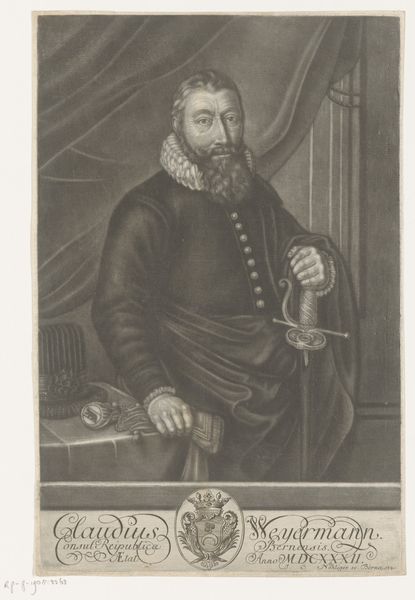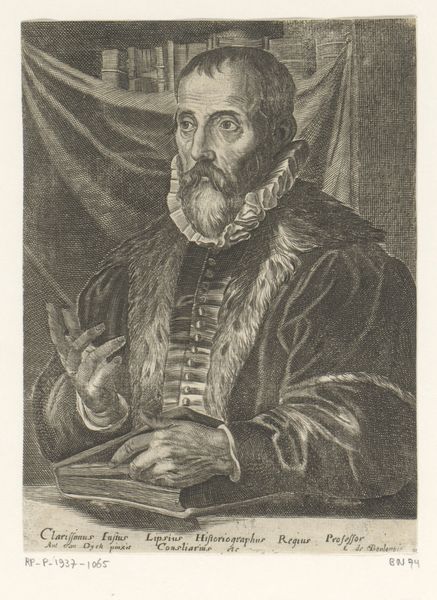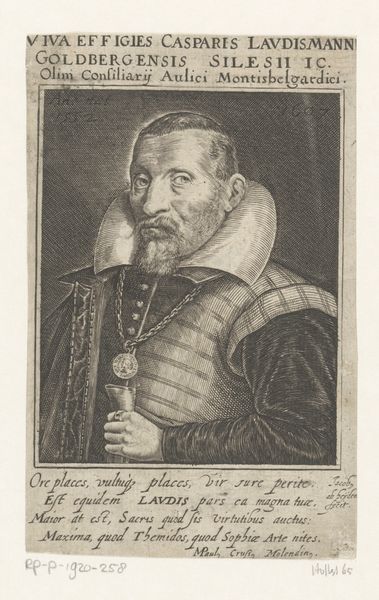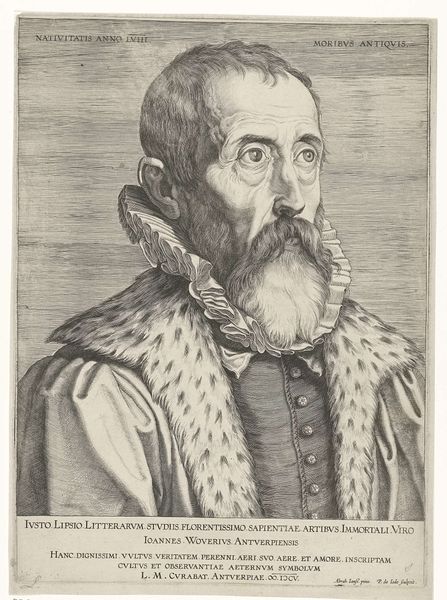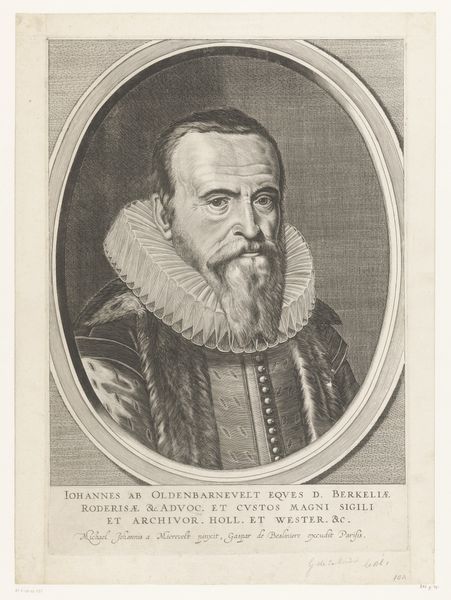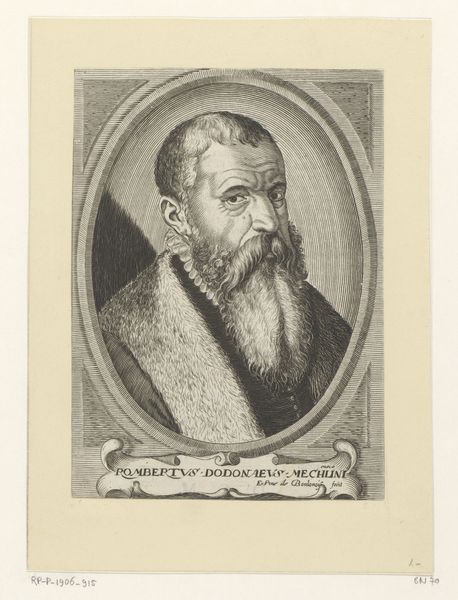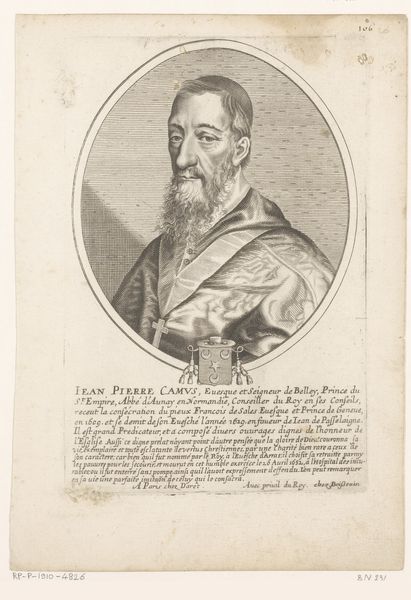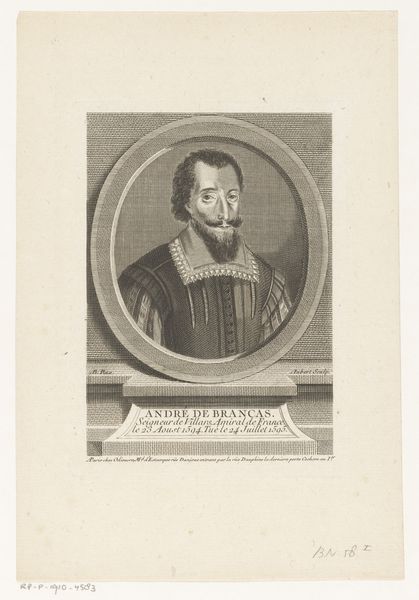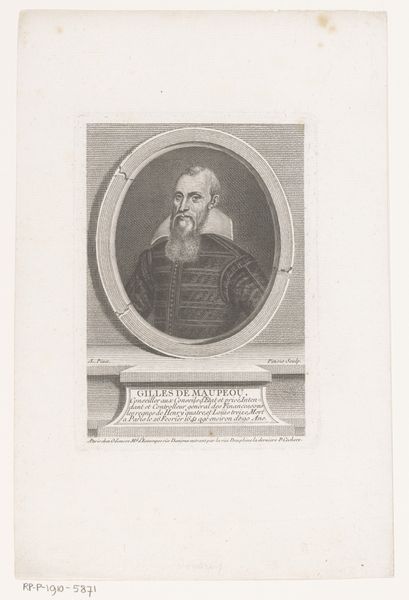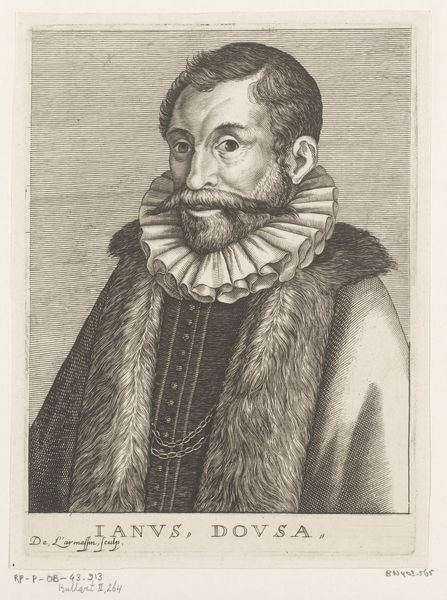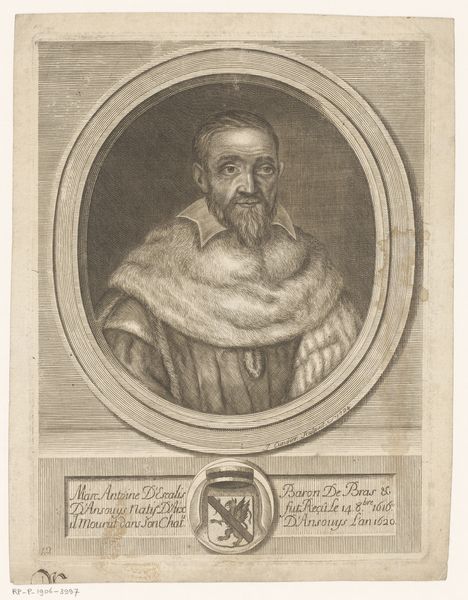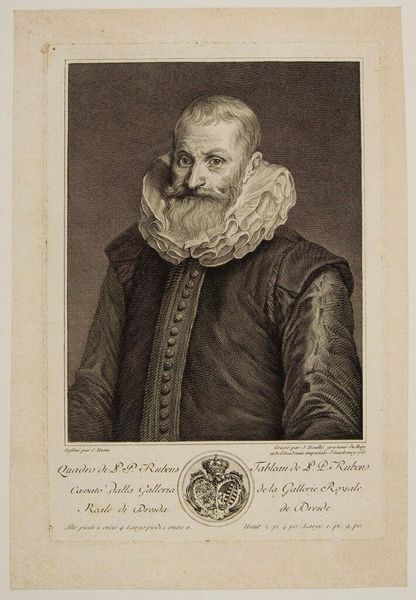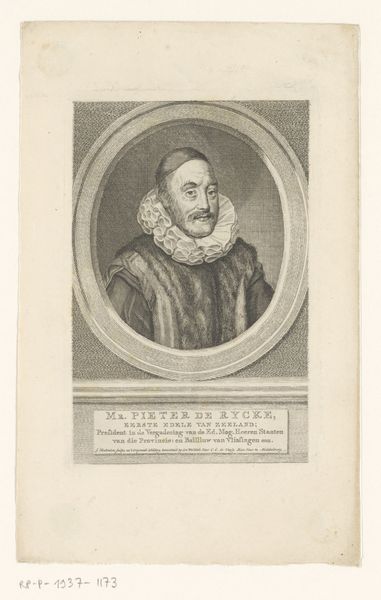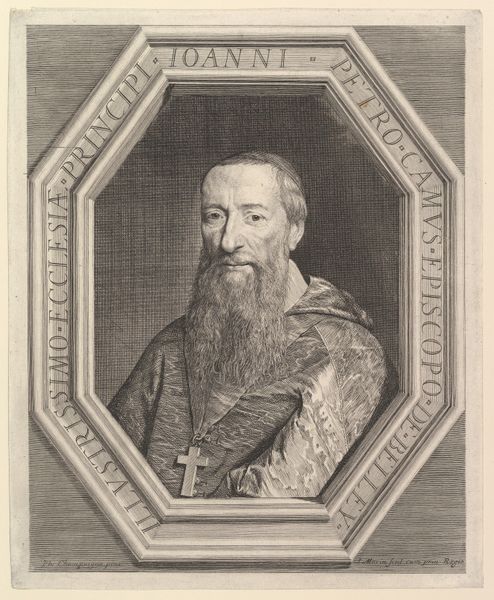
engraving
#
portrait
#
baroque
#
old engraving style
#
engraving
Dimensions: height 184 mm, width 133 mm
Copyright: Rijks Museum: Open Domain
Curator: Looking at this engraving, I'm immediately struck by the subject's stern gaze; there's a certain weightiness about it. Editor: This is a Baroque portrait of Hendrick Goltzius created in 1682, engraved by Edme de Boulonois, currently held in the Rijksmuseum collection. What interests me here are the social codes embedded in the imagery. Curator: Codes indeed. Goltzius, rendered so meticulously, projects a hyper-masculine figure of authority. Even his clothing seems constructed as a signifier. Editor: Precisely! Boulonois deploys the Baroque style to reinforce Goltzius' status within the cultural hierarchy of the era. Look at the ornate ruff, the elaborate buttoning on his doublet – each element works to convey power. It’s more than a likeness; it's a carefully constructed image designed to impress upon its viewers the importance of Goltzius. We must also understand who Boulonois created this engraving *for* and to what extent it served to boost the image of *both* artists through circulation of such printed media. Curator: It feels, in many ways, performative. And looking at the background treatment, with those densely packed lines, it sets up a sharp contrast with the crispness of his facial details. What statement do you suppose that's trying to make, positioning him almost against an industrial-esque background, as if pushing him into the future? Editor: Consider Goltzius' own identity, too; he was a leading printmaker, draughtsman, and painter. This engraving, then, serves not only as a depiction of a man, but also an advertisement for the sophisticated skill in the art of printmaking, connecting it to established power structures. He represents part of a larger dialogue about class and artistic capability within this era. Curator: That provides a crucial layer of understanding. It makes the performance of Goltzius, as captured here, seem less about personal vanity and more about staking claim to a space. It really emphasizes how portraits of men, in particular, have worked historically as agents of their own self-fashioning. Editor: Agreed. By focusing on these contextual narratives, we start to see artworks like these not just as aesthetic objects, but as active participants within much broader discussions around identity, social aspiration and representation itself. Curator: Absolutely. It is in grappling with those tensions that art becomes something far richer and engaging for contemporary viewers. Editor: Indeed; hopefully we've given our audience here a starting point to critically explore that further.
Comments
No comments
Be the first to comment and join the conversation on the ultimate creative platform.
